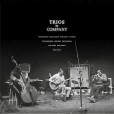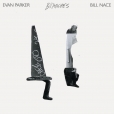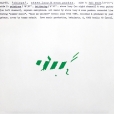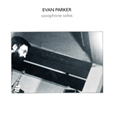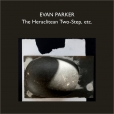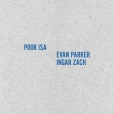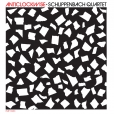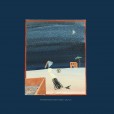Your basket is empty

A typically eclectic collection of guests joined Derek Bailey for Company Week in 1983: saxophonists Evan Parker and Peter Brötzmann; cellist Ernst Reijseger, mainstay of Dutch new jazz (ICP Orchestra, Clusone Trio); American wind virtuoso J.D.Parran, veteran of the Black Artists’ Group and Anthony Davis and Anthony Braxton ensembles.
The French bassist Joëlle Léandre is equally at home playing free or performing works by Cage and Scelsi, while Vinko Globokar is an acclaimed composer as well as a trombonist of monstrous virtuosity.
British electronics pioneer Hugh Davies served time alongside Globokar with Karlheinz Stockhausen. Percussionist Jamie Muir was with Davies on the very first (Music Improvisation) Company outing in 1970, before a brief stint with King Crimson.
Is there an ideal number of musicians for free improvisation? Bailey once described playing solo as a “second-rate activity” – though he did it spectacularly well – while at the other end of the spectrum, large improvising ensembles can descend into an unwieldy racket.
Three may be a crowd for some, but for Pythagoras it was the perfect number, and trios work surprisingly well in improvised music. Sometimes one instrument takes centre stage, like Parker’s circular-breathing soprano at the beginning of Five, but knowing when to lie low, as he does in the brief austere Three, is just as crucial to the success of the whole. Muir makes sure he doesn’t get in the way of Globokar and Parran’s leisurely exchanges on Four, but the trombonist is all over the place on One, with Léandre racing up and down her bass and Davies all spikes, squeaks and squiggles.
With a touch of Bailey’s dry humour, two of these seven recordings aren’t trios at all: Trio Minus One is his duo with Reijseger, running the gamut from crazed polyrhythmic strumming (imagine Reinhardt and Grappelli playing Schoenberg and Nancarrow simultaneously) to what must be the fastest cello pizzicati ever recorded. And on the closing ecstatic nonet, Brötzmann and trumpeter John Corbett prove that more cooks don’t necessarily spoil the broth but sure as hell can spice it up.
‘Performed in Berlin at the Haus am Waldsee in July, 1985, it was every bit the chamber concert — super intimate and interactive, gorgeously recorded by FMP’s Jost Gebers in an ideal acoustic room. Rather than alternate between one and the other, Lacy and Parker explore middle-terrain the whole time, perhaps skewing a tad more Lacy’s funky-tuneful direction, becoming a single soprano entity made of fragments of sound sometimes accreting into perfectly imperfect lines. Two long tracks, Full Scale and Relations, are completed by a final four-minute coda aptly titled Twittering. Indeed, the whole program has the joyous interactivity of Paul Klee’s painting Twittering Machine: birds aligned on a line, proposing and picking up lines, nothing cruel or mean-spirited, free play all a graceful twitter.’
Poor Isa — Ruben Machtelinckx and Frederik Leroux — playing woodblocks and prepared banjos; joined by Evan Parker, and Norwegian percussionist Ingar Zach.
Wonderful, moody, questing music, beautifully presented, in thick grey cardboard sleeves with foil stamping. Individually hand-numbered, in a first edition of just 150.
These are the last copies.
Strongly recommended.
A quartet with Evan Parker, Alan Silva, and Paul Lovens.
Though music journalists made a big deal recently about the release of a 1965 rehearsal tape by Derek Bailey’s Joseph Holbrooke trio with Gavin Bryars and Tony Oxley, those early efforts were mere tentative steps along a cliff edge wearing a line safely attached to Coltrane. There’s still a whiff of jazz to Bailey and Parker’s work with the Spontaneous Music Ensemble up to and including 1968’s Karyobin.
But with the addition of Jamie Muir — the first great free improvising percussionist who didn’t start out as a jazz drummer — and the way-leftfield electronics of Hugh Davies, the MIC leapt right off that cliff.
These six tracks — tight, electric, pointillistic, brilliant, uncompromising and exhilarating — sound like nothing else that came before.
In a word, seminal.

